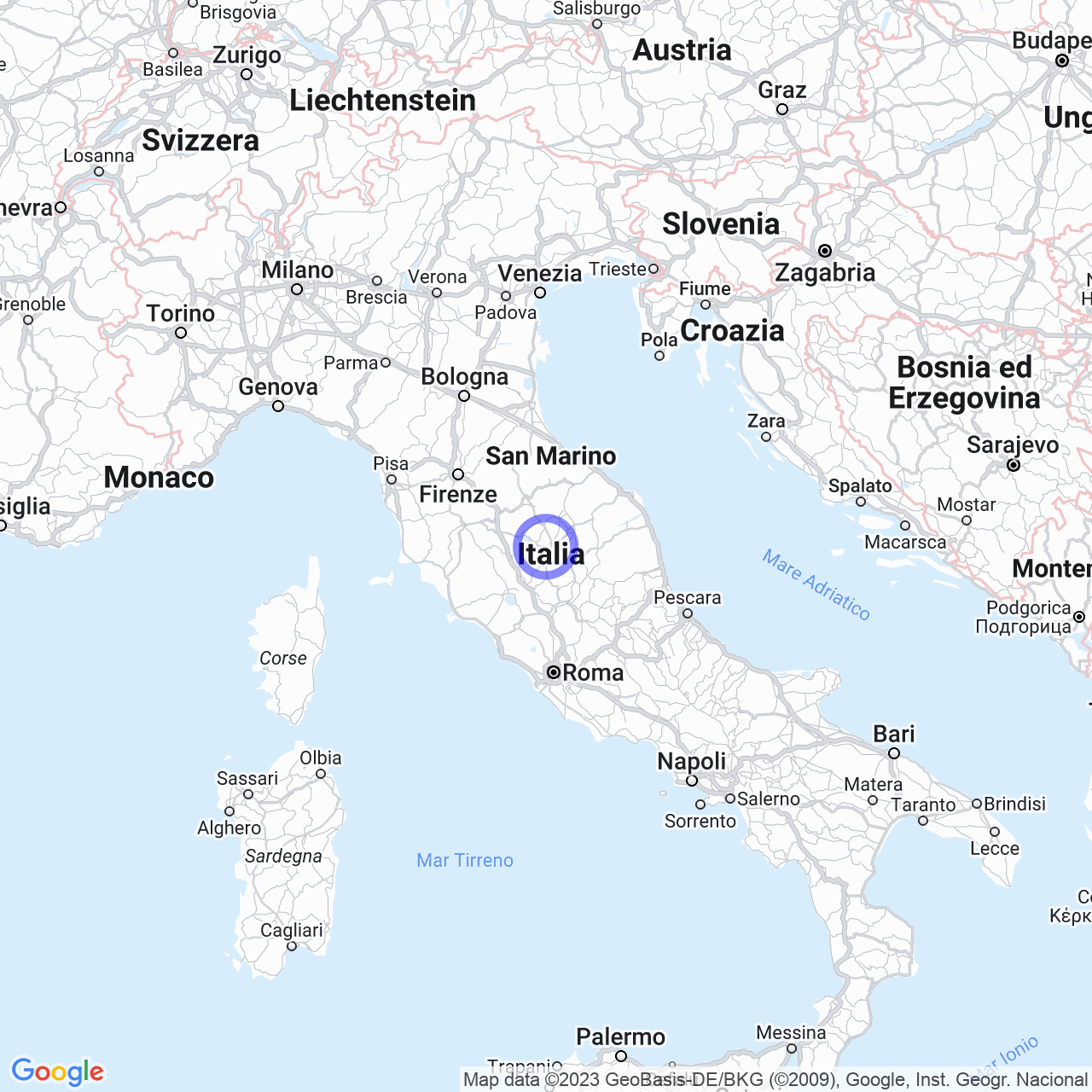Perugia
Perugia: art, culture and history
Perugia is an Italian municipality located in the Umbria region, in the center of Italy. With a population of approximately 161,742 inhabitants, it is the capital of the province of Perugia and of Umbria. Founded by the Etruscans on a pre-existing Umbrian settlement, the city has over three thousand years of history and was one of the great lucumonies of Etruria, under the name of "Perusna". The original Etruscan city walls, visible in many parts of the city, enclose the Colle Landone and the Colle del Sole.
The city is known for its wide historic center, asymmetrically distributed on a series of hilly elevations a short distance from the Tiber River. With a harmonious medieval appearance, Perugia has several fractions spread throughout the vast municipal territory, making it one of the first 100 Italian municipalities by surface area.
Art and culture
Perugia is the homeland of numerous artists, including the Perugino, Pinturicchio, Galeazzo Alessi, Vincenzo Danti, Guglielmo Calderini and Gerardo Dottori. During the Italian Renaissance, the city was a training ground for important figures such as Raphael Sanzio, Pietro Aretino, Piero della Francesca and Luca Signorelli. The city is also the birthplace of mathematician and astronomer Ignazio Danti, who revolutionized modern cartography and reformed the calendar, dragging it from the Julian Calendar to the Gregorian calendar.
The city is famous for its rich history and monuments, making it a cultural, productive and directional center of the region and an international tourist destination. The University of Perugia is one of the oldest universities in Italy and the world, founded in 1308. The city also hosts the second oldest academy in Italy, the Pietro Vannucci Academy of Fine Arts (1570), and one of the first public libraries, the Augusta Library (1592).
Physical geography
Perugia develops on a system of hills at an altitude of about 450 meters above sea level. The historic center lies around the Porta Sole, the highest point of the city at 494 meters above sea level. The historic city is mostly stretched across the ridges, with a major axis of 6 km between Monte Ripido (north) and San Costanzo (south) and a minor axis of 3 km between S. Francesco and Monteluce. The city is dominated by the Tower of Mangia, a bell tower 88 meters high and located in Piazza del Campo, in the heart of the historic center. The panorama offers a spectacular view of the surrounding countryside, and the city is surrounded by olive groves, vineyards and forests.

Monuments and tourism
The historic center of Perugia preserves numerous works of art of historical and artistic value, including the Palazzo dei Priori, the Cathedral of San Lorenzo, the Fontana Maggiore, the Temple of San Michele Arcangelo, the Rocca Paolina, the Etruscan Arch, the Church of San Pietro, the Church of San Francesco al Prato, the Museum of the Cathedral, the National Archaeological Museum of Umbria and the Palazzo degli Oddi Marini Clarelli.
Perugia is also famous for its cultural events and nightlife, including the Umbria Jazz Festival, the Chocolate Festival, the Tuscan Sun Festival, the Music Fest Perugia and the Umbria Film Festival. The city also has numerous boutiques, restaurants, bars and cafes that make it an ideal place for lovers of culture, good food and elegance.
Perugia is a city with numerous cultural and landscape attractions, a place where history, art, culture and nature combine to create an unforgettable experience for visitors from all over the world. Do not miss the opportunity to visit this charming city!
